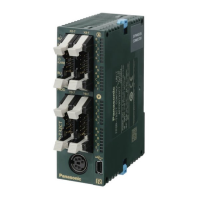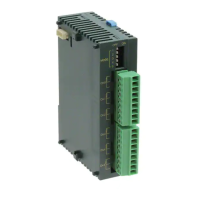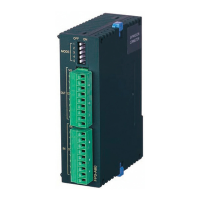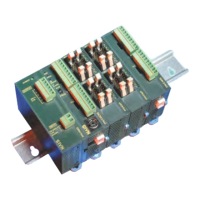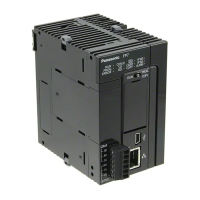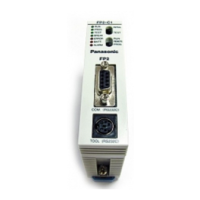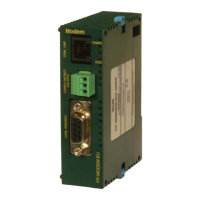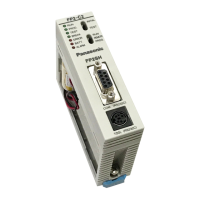4.3 Analog Output Unit (FP0R-DA4)
4-15
When data is regarded as an error
• Digital data from the control unit is written in the Analog Output Unit.
When more than the specified amount of data (-8000 to 8000 for ± range, 0 to 16000 for +
range) is written in the Unit, the Unit regards the data as an error and writes the error flag in
WX2. As a result, the D/A conversion is not performed. For analog output, the previous data
remains unchanged. When the correct data is written, the error flag is cleared and D/A
conversion is executed.
• Output data and output switching flag are allocated to the sane I/O number. Data error can
be detected successfully with the flags when the digital input value is within the range of -
8192 to +8191 for ± range, 0 to 16383 for + range. Even when the digital input value is out of
the range, however, data conversion may be mistakenly conducted as shown below. To
prevent this problem, be sure to set up the program to check the upper and lower limits of
the digital value.
(Example): When writing K16384 in WY2
K16384= 0001 0000 0000 0000
Analog Output Unit regards Y2D and Y2C as output switching flags:
Y2F, Y2E = 01 <- CH0
Data =00 0000 0000 0000 <- 0
Consequently, the analog value that is equivalent to the digital value “0” is output from CH0.
Negative data
• When the negative data (minus data) is written, set the output switching flag to two's
complement data. When specifying the minus data in the decimal data, the data
automatically becomes two's complement data. Then, set the output switching flag to two's
complement data in the same way as the plus data.
(Example): When writing -1 in CH0
-1=1111 1111 1111 1111 <- Two’s complement
Setting the output switching flag: 0111 1111 1111 1111 (Bit F=1, Bit E=0 for CH0)
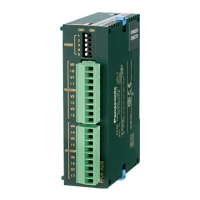
